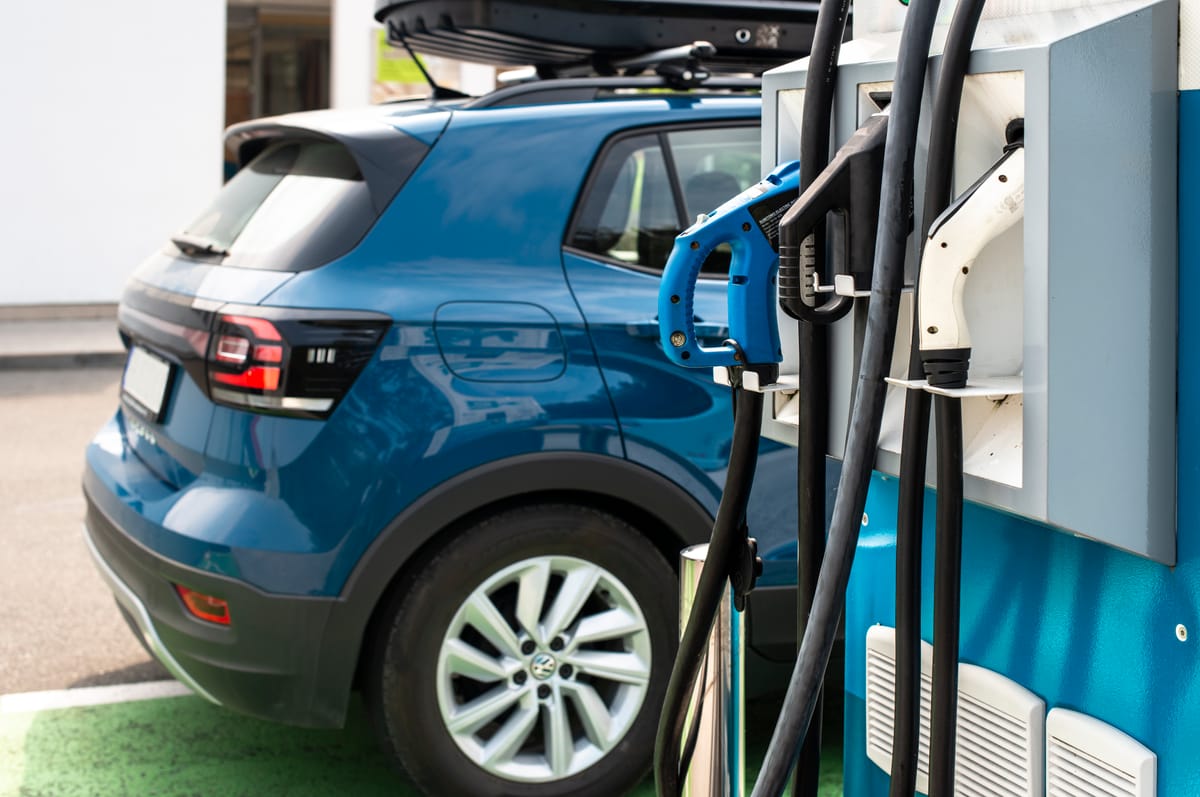Hybrid Cars Explained: Mild, Full, Plug-In – What’s the Real Difference?

The Year Was 2000…
Toyota Prius rolled onto the global stage like that cousin who shows up at a wedding in a designer suit while everyone else is in jeans. It was the first mainstream hybrid, and people didn’t know whether to clap or laugh. “A car that runs on petrol AND electricity? Impressive!”
Fast forward to 2025, and hybrids are everywhere, from the humble Toyota Aqua to the sleek Lexus RX 450h.
But here’s the thing: not all hybrids are created equal. You’ve probably heard terms like mild hybrid, full hybrid, and plug-in hybrid thrown around like confetti. If you’ve ever nodded along pretending to understand, this one’s for you.
But before we dive into hybrids, let’s rewind and talk about the engines that got us here:
- Internal Combustion Engines (ICE)
- Hydrogen ICE (H2ICE)
What Is an Internal Combustion Engine (ICE)?
For over a century, the internal combustion engine has been the king of the road. It’s simple: fuel (petrol or diesel) mixes with air, ignites in a cylinder, and boom, power. That explosion pushes pistons, turns the crankshaft, and moves your car.
Why did ICE dominate for so long?
- Energy density: Petrol packs a lot of energy in a small volume.
- Infrastructure: Fuel stations are everywhere.
- Cost: ICE cars were cheaper to make and maintain.
But ICE has a dark side:
- Emissions: CO₂, NOx, and particulates = climate change and air pollution.
- Fuel dependency: Prices swing like a Nairobi matatu in traffic.
This is why the world started looking for cleaner alternatives.
Enter Hydrogen ICE (H2ICE): The New Kid on the Block
Hydrogen ICE engines work like petrol engines, but instead of petrol, they burn hydrogen gas. The result? Almost zero CO₂ emissions because hydrogen combustion produces mainly water vapour.
Sounds perfect, right? Not so fast:
- Hydrogen storage is tricky: It needs high-pressure tanks.
- Infrastructure is missing: Where do you refuel in Kenya? Exactly.
- Still emits NOx: Not as clean as a fuel cell EV.
So why bother? Because H2ICE could be a bridge technology for heavy-duty vehicles and markets where full electrification is tough. Think trucks, buses, and maybe even performance cars.
Why Hybrids Became the Bridge
Full EVs are the future, but Kenya isn’t there yet, charging infrastructure is limited, and EV prices are still high.
Hybrids offer the best of both worlds:
- Lower fuel consumption
- Lower emissions
- No range anxiety
Now that we’ve set the stage, let’s talk hybrids.
What Exactly Is a Hybrid Car?
A hybrid car is basically a two-in-one deal: it combines a petrol (or diesel) engine with an electric motor powered by a battery. The goal? Save fuel, reduce emissions, and make your wallet smile.
Here’s the magic trick:
- At low speeds or in traffic, the electric motor can take over, meaning zero fuel burn.
- When you need power (like overtaking that matatu on Thika Road), the petrol engine kicks in.
- Plus, hybrids use regenerative braking, every time you brake, the car captures energy and stores it in the battery. Genius, right?
But not all hybrids work the same way. Here are the three main types.
1. Mild Hybrid (MHEV): The Sidekick, Not the Hero
A mild hybrid is like that friend who chips in for fuel but never drives. It cannot run on electricity alone. Instead, the electric motor just assists the petrol engine, especially during acceleration or when idling.
How It Works
- The engine does the heavy lifting, while the electric motor gives a little boost.
- The motor also powers start-stop systems, so the engine shuts off at traffic lights and restarts smoothly.
- The battery is small (usually 48 volts) and charges itself through braking and engine power.
Fuel Economy
Expect 10–15% better fuel economy than a regular petrol car. Not life-changing, but noticeable over time.
Pros
- Cheaper than other hybrids
- Simple tech = fewer headaches
- No need for charging stations
Cons
- Can’t drive on electric power alone
- Savings aren’t mind-blowing
Who Is It For?
If you want a taste of hybrid life without breaking the bank, this is your entry point. Perfect for someone who drives mostly highways and wants better fuel economy without changing habits.
Kenyan examples: Suzuki Ertiga Hybrid, Mazda CX-90 with M Hybrid system.
2. Full Hybrid (HEV): The OG Hybrid
This is the Prius category, the real deal. Full hybrids can run on:
- Electric power only (for short distances)
- Petrol engine only
- Both together for extra oomph
How It Works
- The car decides when to use electric, petrol, or both.
- In traffic, it’ll glide silently on electric. On highways, the engine takes over.
- The battery is bigger than in mild hybrids but still charges itself, no plugging in required.
Fuel Economy
Full hybrids can deliver 20–30 km/l in city driving. That’s a game-changer for Nairobi commuters.
Pros
- Can drive short distances on electric
- Great for stop-and-go traffic
- No need to hunt for charging stations
Cons
- More expensive than mild hybrids
- Battery replacement can cost a kidney (eventually)
Who Is It For?
If you spend hours in Nairobi traffic, this is your sweet spot. You’ll save big on fuel and enjoy a quieter, smoother ride.
Check these out on Peach Cars: Toyota Prius, Toyota Axio Hybrid, Honda Fit Hybrid.
3. Plug-In Hybrid (PHEV): The Overachiever
Plug-in hybrids do everything a full hybrid does, but better.
How It Works
- Bigger battery = longer electric-only range (20–60 km).
- You must plug it in (home socket or charging station).
- If you charge regularly, you can do short trips without touching petrol.
Fuel Economy
If you charge daily, you might barely use petrol for city errands. On long trips, the petrol engine kicks in, so no range anxiety.
Pros
- Best fuel economy of all hybrids
- Can run like an EV for short trips
- Lower emissions = eco-warrior vibes
Cons
- Needs charging infrastructure (Kenya is catching up)
- Higher upfront cost
- Heavier = slightly less boot space
Who Is It For?
If you live in Nairobi with access to home charging, a PHEV like the Toyota Prius Prime or Mitsubishi Outlander PHEV is a game-changer.
Which Hybrid Is Right for You?
- On a budget? Go mild hybrid.
- City commuter? Full hybrid is your sweet spot.
- Want EV vibes without range anxiety? Plug-in hybrid all the way.
Why Kenyans Are Falling in Love with Hybrids
Let’s be real: fuel prices in Kenya are doing gymnastics, hovering around KSh 185 per litre for petrol. Now, imagine this:
- A Toyota Prius doing 22–25 km/l
- A regular petrol sedan doing 12 km/l
If you drive 1,500 km a month:
- Regular sedan: 1,500 ÷ 12 = 125 litres × KSh 185 = KSh 23,125
- Prius: 1,500 ÷ 23.5 (average) = 63.8 litres × KSh 185 = KSh 11,803
That’s a saving of about KSh 11,000 every month, money that could cover your internet, Netflix, and a few nyama choma weekends.
Common Myths About Hybrids (And Why They’re Lies)
- “Hybrid batteries die after 3 years.” Nope. Most last 8–10 years with proper care.
- “They’re too expensive to maintain.” Actually, hybrids often need fewer brake replacements thanks to regenerative braking.
- “Kenya isn’t ready for hybrids.” Tell that to the thousands of Aqua and Vezel owners cruising Nairobi streets.
Peach Cars Pro Tip
When buying a hybrid, check the battery health. At Peach Cars, every hybrid goes through a 288-point inspection, so you don’t end up with a car that’s all looks and no juice.
Ready to Make the Switch?
Peach Cars has a wide range of hybrids, from budget-friendly Toyota Aqua to premium Lexus RX 450h. Plus, with 24-hour financing, trade-in options, and transparent pricing, owning a hybrid has never been easier.
👉 Browse hybrids now on Peach Cars and start saving on fuel today!




